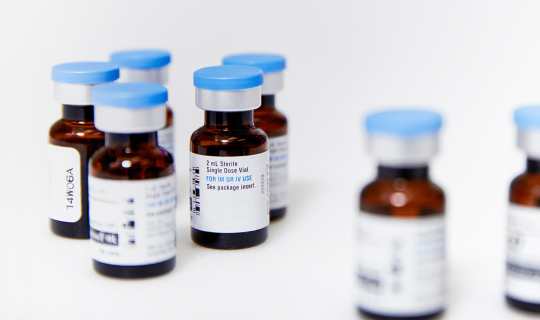Roundtable discussion: How payer models and metrics can contribute to more equitable care
By AmerisourceBergen
A conversation with Natasha Clinton, Senior Director of Medical Affairs at AmerisourceBergen; Alexandra Chong, PhD, Social Science Research Analyst at CMMI; and Angella Charnot-Katsikas, MD, Medical Director, MolDx and Chief Medical Officer at Palmetto GBA.
AmerisourceBergen’s inaugural Disparities in Cancer Care Summit brought together cancer care executives, physicians, patient care leaders, decision makers, pharmaceutical executives, and payers to share insights and ideas. This conversation was part of this unique program, raising critical ideas to consider in transforming the cancer care landscape for underserved populations.
The healthcare industry is constantly evolving, with new advances and technologies changing the way patients receive care. Despite these advancements, however, disparities in healthcare remain a persistent issue. healthcare system. One crucial area of focus is the impact of payer models and metrics on the delivery of care. Insurance companies and other payers have the ability to shape healthcare in significant ways through their reimbursement policies and measurement criteria. However, these models and metrics are not always designed to promote equitable care, and in some cases, they may actually perpetuate disparities. To explore this issue, we spoke with leading experts in the field. Below is an abbreviated version of the full interview. Through this conversation, we hope to raise awareness of the role that payer models and metrics play in shaping healthcare delivery and to encourage a more equitable approach to reimbursement and measurement.
Natasha Clinton: Thank you, Angella and Alexandra, for joining us in this very important discussion this afternoon. Let’s get started with a look at the Enhancing Oncology Model. Can you define that model for us, and share why that’s of interest as we’re exploring ways to address health equity?
Alexandra Chong: The Enhancing Oncology Model (EOM)i is a specialty payment model in the oncology space at The Center for Medicare & Medicaid Innovation (CMMI) in which the Centers for Medicare & Medicaid Services (CMS) is the payer or Medicare is the payer. Just as an, EOM is a voluntary total cost of care model for chemotherapy episodes that seems to improve patient-centered care. It is also the successor to the Oncology Care Model (OCM), which ended in June 2022. In building off that OCM experience, we had goals of improving the patient’s experience as well as providing some cost savings to Medicare for EOM.
We looked to answer two primary questions in the cancer care space. We want to know when oncologists or care providers are held financially accountable for total cost and quality. Do they increase the use of high-value care—such as making a choice to prescribe lower cost drugs, which includes things like generic biosimilars—while improving the patient experience? Are they putting patients at the center of a care team that provides high-value equitable evidence-based care, and are they improving that type of care coordination as well as health outcomes?
Natasha Clinton: As we think about equitable care delivery, can you share some of your thoughts related to payment model design, and what’s needed to support the care delivery that happens in the community oncology setting?
Angella Charnot-Katsikas: To look at a payer model, first we have to look at the disparities, address them, and define them. And to do that, I think we have to cast a very broad net. For example, there’s poverty, there’s lack of access, even when hospitals are five minutes away. But there’s violence, too. We have to remember that some people are afraid to open their doors at night, or open their doors in the daytime even, and walk to a bus stop. There are a lot of things to address.
Physician and patient education is another important component, and I can’t stress that enough, because part of the model is going to include payment for physician services. And if the physicians aren’t aware or motivated or educated on what they’re supposed to do and how they’re supposed to provide those services, then we can’t really structure a model around that.
At the end of the day, the model is going to be evidence based. So, we have things like National Comprehensive Cancer Network (NCCN) guidelinesii that help address this, and the models will have to be molded to fit the information. And then the last thing I want to say about that is that it’s a feedback loop, right? So not only do we have to understand the problem and define the problem, then we have to measure the problem and implement change. Without that feedback loop and without that flexibility, we won’t see where the imperfections are and where the flaws are even within the best models.
Natasha Clinton: Are there gaps in the data and in patient-level insights that, if captured, may help us to better understand factors that are impacting population health and inequities in care?
Alexandra Chong: I think data-driven experiences—in terms of motivating physicians and providers—can be a very powerful tool. And I think as we have begun to think a little bit more about the inequities that exist and how we can address it as a society, it makes sense for us to link data as that type of evidence-based care to help support our efforts in those areas. But I think it can be really challenging as well. One area within CMS that’s part of our health equity strategies across not just EOM as a cancer delivery model, but across so many of the models that are coming out of the innovation center, is collecting sociodemographic data. That can then serve as the foundation upon which we learn and strive to achieve equitable care.
For instance, at the innovation center, we largely rely on a lot of our claims data. So, claims data that provides information regarding the services patients receive—the diagnoses, the treatments, all those kinds of things—offers a lot of rich information. But I think in seeing that disparities exist within cancer care, we need to prioritize trying to best profile what that care may look like by linking it to that type of sociodemographic data.
Angella Charnot-Katsikas: In thinking about the gaps, I would structure it in this way. There are things we know that we don’t know—we know there are gaps. We know, for example, there are gaps in genomic data across populations. Although the data is growing and the genomic level information is growing, much of the information is from North America or Europe. So we’re missing key elements of the population in our genomic data, such that when we’re doing testing or biomarker support, that really needs to be predicated on good global data. We also know there are gaps in physician education and patient education. It’s well-published that doctors—depending on where you practice and how you practice—just don’t know how to address the issue of the rapidly evolving field of genomics, for example, which is critical to any patient with cancer or to a patient with a predisposition for cancer.
So, if a doctor doesn’t know, and a patient doesn’t know, then nobody knows, and that means nobody’s getting the correct care. Those are some of the gaps. This can happen even with well-identified genes like BRCA 1 and BRCA 2.iii About 90 percent of doctors know exactly what those genes are and what they do to people, and what you can do to prevent cancers that result from them. But a much smaller percentage of doctors will refer for the appropriate testing, even in those patients that probably have a gene like BRCA 1 and 2, if not those exact genes themselves.
Natasha Clinton: We’ve heard a little bit about what program or model design needs to look like. We’ve talked about the data, but how do we know if the model is successful? How do we measure that?
Alexandra Chong: That’s a difficult question to answer in so many ways. I think the issue of self-equity has long been something we need to address, and in more recent years that’s been at the forefront of our priorities. In my experience at CMS and in talking with physicians and oncology stakeholders, the number one way that we can start measuring access is really establishing and acknowledging a baseline metric of care, health outcomes, symptom management, and equitable access to care and treatment across patients.
I think part of that also comes from acknowledging, recognizing, and identifying where those disparities may potentially exist within your community, within your practice, and within the patient population you’re seeing. And I think it’s also important to continuously measure how those metrics are changing over time based on concerted implementation efforts to improve and meet that goal of equitable care. So it’s about identifying where those specific or unique gaps exist and acknowledging that they are going to exist within your community, your practice, or your patient population.
I think a lot of times oncology care is focused on treatment and improved outcomes, and survivorship—which are top priorities. But taking a closer look and seeing how those things differ across various characteristics or variables is a good beginning for us to try to measure that success…
i NCCN Guidelines: Treatment by Cancer Type. https://www.nccn.org/guidelines/category_1
ii Enhancing Oncology Model. Centers for Medicare & Medicaid Services. https://innovation.cms.gov/innovation-models/enhancing-oncology-model
III National Cancer Institute. BRCA Gene Mutations: Cancer Risk and Genetic Testing. https://www.cancer.gov/about-cancer/causes-prevention/genetics/brca-fact-sheet
iii National Human Genome Research Institute. Talking Glossary of Genomic and Genetic Terms: Evolution. https://www.genome.gov/genetics-glossary/Evolution




